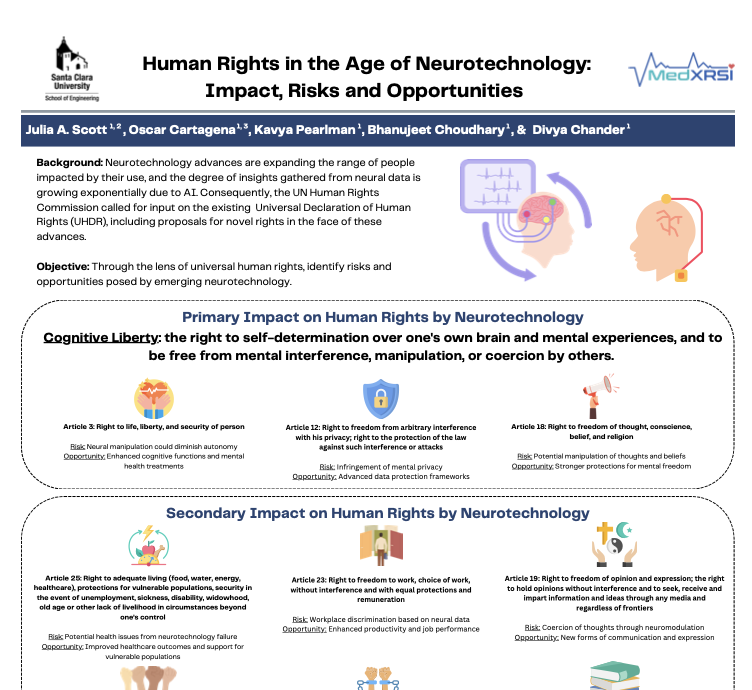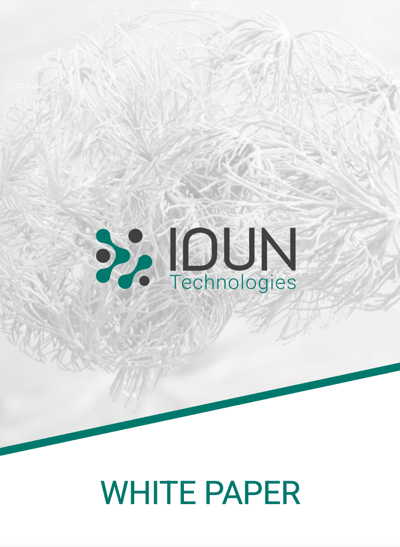Everything we do is backed by data.
Feel free to Browse our Publications

Measuring Sleep Depth with Odds Ratio Product (ORP) and In-ear EEG Earbuds
E. Meier et al. 2024
At SLEEP 2024 IDUN and Cerebra presented the latest results from our collaboration development project: PSRP - The Personalised Sleep Recovery Platform for Better Health and Performance. The PSRP project combines the IDUN in-ear EEG Brain-Sensing earbuds together with the Odds Ratio Product (ORP) sleep depth algorithm from Cerebra.
In our poster: “Measuring Sleep Depth with Odds Ratio Product (ORP) and In-ear EEG Earbuds” we present the results of a quality assurance investigation with overnight sleep and the combination of the IDUN Guardian (in-ear EEG) and Cerebra Prodigy (PSG) systems.
The study results indicate that ORP can run on the IDUN Guardian with high accuracy, but that more development work is needed to ensure good reliability and signal quality over different users. IDUN is working together with Cerebra and Pilotfish to optimize the design of the IDUN Guardian for consumer sleep applications and to bring the product to market in N. America and Europe.

Paired in-ear and scalp EEG shows psilocybin-induced alpha desynchronization and allows for prediction of treatment state
S. Ahmed et al., ALPS Conference 2023.
The poster by Sama Therapeutics Inc and IDUN Technologies AG explores the use of in-ear EEG, specifically the IDUN Guardian device, to monitor psilocybin-induced changes in brain activity. The study, involving 8 volunteers, compares in-ear EEG readings with those from a scalp EEG device, revealing over 80% signal correspondence. Key outcomes include the detection of significant alpha desynchronization post-psilocybin treatment, and the development of a neural network model that successfully distinguishes between pre- and post-treatment states with high accuracy. This research highlights the potential of in-ear EEG in psychedelic therapy, offering a more comfortable alternative to traditional scalp EEG.

Preliminary validation of in-ear EEG against PSG system for sleep staging Sleep Medicine
Wälti et. al Vol 100, Supp 1, Dec. 2022.
This article discusses the validation of our IDUN Guardian, an in-ear EEG system, against the gold-standard polysomnography (PSG) for sleep monitoring. The study involved 10 datasets from 8 healthy participants, comparing sleep stages using the AASM criteria. Results showed a good correlation between in-ear EEG and PSG in identifying sleep stages, with an average Pearson correlation coefficient of 0.78. This concludes, that the IDUN Guardian is effective in detecting sleep markers and is suitable for long-term, comfortable use, particularly for monitoring narcolepsy patients non-invasively.

Advancing towards Ubiquitous EEG, Correlation of In-Ear EEG with Forehead EEG.
Mandekar et al., Sensors 22(4): 1568 (2022).
This study explores the viability of in-ear electroencephalography (EEG) as a less intrusive alternative to traditional forehead EEG. Utilizing custom electrodes integrated into earpieces, the study, conducted with ten participants, reveals that in-ear EEG closely matches forehead EEG in terms of signal quality and impedance. Notably, it exhibits a high correlation (0.92) in alpha wave detection between the two methods, underlining the potential of in-ear EEG for continuous monitoring and in mobile brain-computer interface applications, without compromising on data quality or user comfort.
Earable Design Analysis for Sleep EEG Measurements
Mandekar et al., UbiComp/ISWC ’21.
In the study focusing on the optimization of Ear-EEG systems for mobile and at-home monitoring, a quantitative analysis was conducted to evaluate the impact of electrode size and location on signal quality. The research reveals that electrode impedance is inversely related to size, varying from 450 kΩ to 1.29 MΩ for dry contacts and 22 kΩ to 42 kΩ for wet contacts at 10 Hz. The study identifies the ELE (Left Ear Superior) location in the ear canal as having the lowest impedance, likely due to increased contact pressure from the outer-ear anatomy. These findings are crucial for enhancing signal pickup and signal-to-noise ratio (SNR) in Ear-EEG applications. The practical application of these insights is demonstrated through the high-quality recording of sleep spindles during sleep onset, achieving a notable signal strength of 5.27 μVrms.

Human Rights in the Age of Neurotechnology: Impact, Risks and Opportunities
Scott et al., Neuromodec, 2024
Explore the potential and ethical considerations of neurotechnology in human rights! Our latest insights focus on the balance between innovation and personal freedoms. Neurotechnologies hold promise for enhancing cognition, health, and communication, but also pose risks to mental privacy, equality, and autonomy. Guided by the Universal Declaration of Human Rights, we spotlight both risks—like workplace discrimination or coercion of thoughts—and opportunities, such as personalized learning and improved healthcare outcomes. Join us in advancing protections, advocating for ethical standards, and embracing responsible neurotech innovation. Discover more about how this evolving field can shape our future responsibly!

Estimating cognitive workload using a commercial in-ear EEG headset
Tremmel et al. 2024
How close are we to using EEG in everyday life? Our latest study demonstrates the potential of the IDUN Guardian to track cognitive workload seamlessly. The findings show promising results, with recommendations for further enhancements to make neurotechnology more accessible and effective outside the lab. Dive into the future of wearable brain monitoring!

The Role of Slowing Down in Fast-Paced Game Jams
J. Falk et al. 2024
Discover how integrating mindfulness into fast-paced environments like game jams can boost creativity and productivity. This study explores the innovative VibeHive setup, a calming intervention designed for intense 48-hour game jams. Findings suggest that brief, structured relaxation—enhanced by music, dim lighting, and EEG monitoring—helps participants recharge, focus, and engage more creatively. Learn about the potential of well-being practices in high-pressure settings and how they may lead to richer, more productive experiences in the world of game design.

Multi Domain Feature Fusion from a combination of Empirical Wavelet Transform and Boruta feature selection for Improved Sleep Stage Classification
A. Khilnani et al. 2024
Discover the breakthrough in sleep stage classification! This study introduces an innovative combination of Empirical Wavelet Transform and Boruta feature selection to enhance machine learning models for sleep staging. By extracting multi-domain features from EEG signals and refining them with advanced feature selection, the approach boosts accuracy while reducing computational complexity. With applications in diagnosing and treating sleep disorders, this research is a game-changer for clinical studies on human sleep. Dive into how these methods outperformed existing solutions and opened new avenues for sleep science!
Our Whitepapers
Company Whitepaper
Do you want to know more about the technology behind the IDUN Guardian? This white paper provides a detailed and in-depth introduction to our technology and its applications. It focuses on the benefits of the IDUN Guardian compared to traditional full-scalp electroencephalography (EEG) and other wearable biomonitoring systems. We provide validation of the IDUN in-ear EEG system to measure neuronal activity from various cortical sources covering multiple well-studied functions of the human brain, such as sensory and cognitive processes.


Cognitive Workload Whitepaper
Explore the future of cognitive workload assessment with the IDUN Guardian: Harnessing the power of in-ear EEG technology, this groundbreaking Whitepaper reveals how we can measure and respond to mental effort in real-time. Discover how this innovation can enhance productivity, learning, and safety in everyday life. Dive into the world where technology meets cognitive science!
